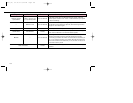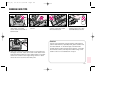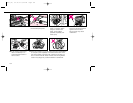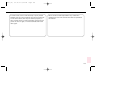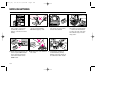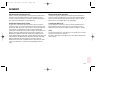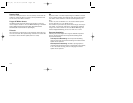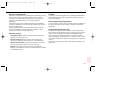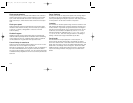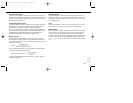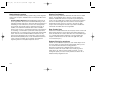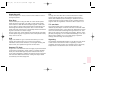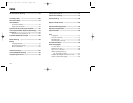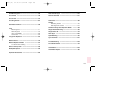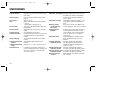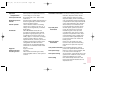
158
Flash synchronization
Timing of the flash so it coincides with release of the camera’s
shutter. There are two types of synchronization: Front-Curtain
Sync, which fires the flash at the start of the exposure, and
Rear-Curtain Sync, which fires the flash at the end of the expo-
sure.
Flash sync speed
Shutter speed at which the entire film frame is exposed when
the flash is fired in flash shooting. The F5’s flash sync speed is
1/250 sec. or slower, changeable to 1/300 sec. with the
Custom Setting.
Flexible Program
Flexible Program function temporarily shifts an automatically
selected shutter speed/aperture combination while maintaining
correct exposure. That is, a desired shutter speed or aperture
can be selected in Programmed Auto exposure mode.
Focus-Priority for autofocus
Shutter cannot be released until the subject is in focus. For situ-
ations when an in-focus subject is important.
With the F5 camera body, Focus-Priority is given to Single Servo
AF mode while Release-Priority is given to Continuous Servo
AF. Using Custom Setting, however, you can change the priority
to Release-Priority Single Servo AF or Focus-Priority Continuous
Servo AF.
Focus Tracking
Enables the camera to analyze the speed of the moving subject
according to the focus data detected, and to obtain correct
focus by anticipating the subject’s position—and driving the lens
to that position—at the exact moment of exposure.
f-number
The numbers on the lens aperture ring and in the camera’s LCD
that indicate the relative size of the lens aperture opening. The f-
number series is a geometric progression based on changes in
the size of the lens aperture, as it is opened and closed. As the
scale rises, each number is multiplied by a factor of 1.4. The
standard numbers for calibration are 1.0, 1.4, 2, 2.8, 4, 5.6, 8,
11, 16, 22, 32, etc., and each change results in a doubling or
halving of the amount of light transmitted by the lens.
Focal length
The distance from the principal point to the focal point. In
35mm-format cameras, lenses with a focal length of approx.
50mm are called normal or standard lenses. Lenses with a focal
length less than approx. 35mm are called wideangle lenses, and
lenses with a focal length more than approx. 85mm are called
telephoto lenses. Lenses which allow the user to continuously
vary the focal length without changing focus are called zoom
lenses.
P400 (E) 02.12.27 6:42 PM Page 158



